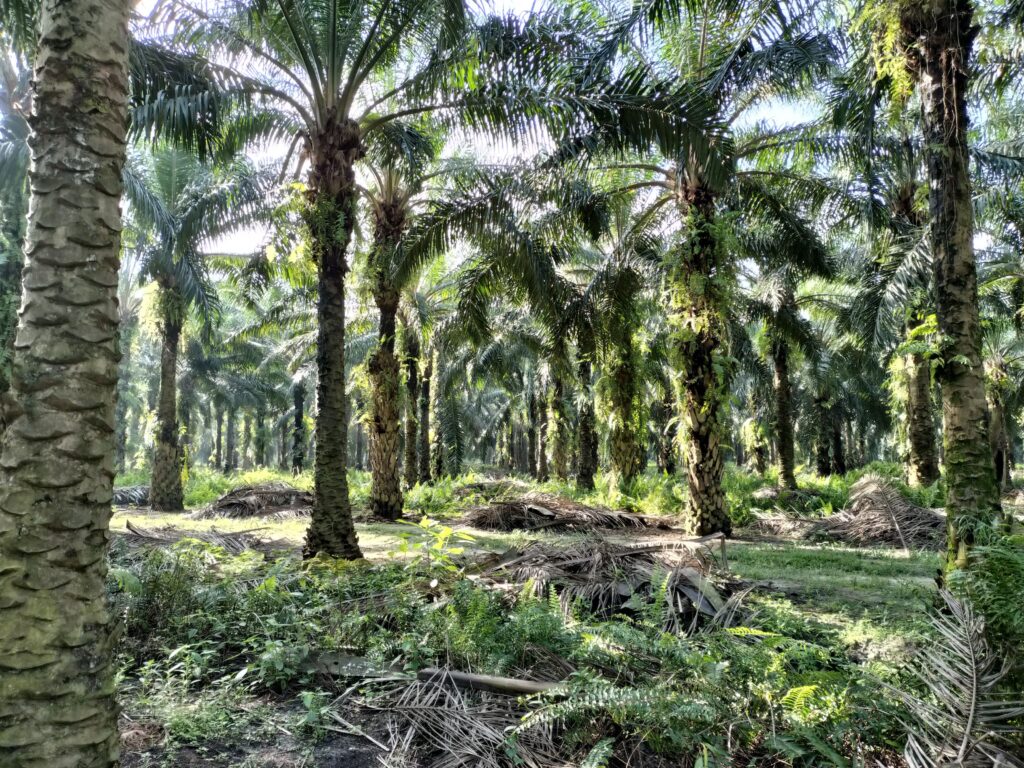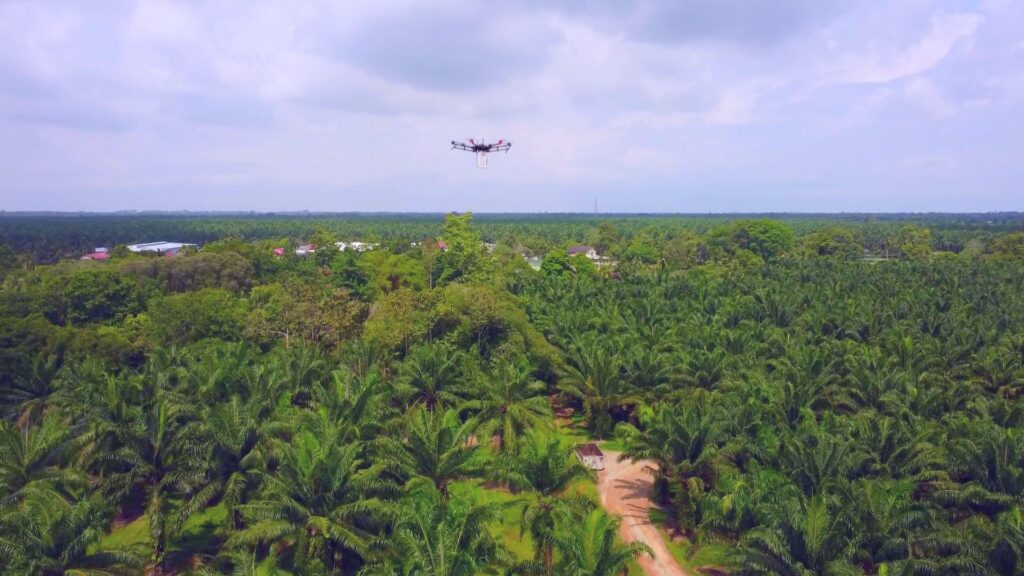About Palm Oil
Palm oil is a vegetable oil extracted from the oil palm plant.
Although the name may be unfamiliar, palm oil is widely used in cup ramen noodles, snack foods, and fried oil in the food service industry. It is also widely used in chocolates, curry roux, and detergents.

Oil palm is a plant that grows in hot and humid tropical regions, and two countries, Indonesia and Malaysia, currently account for nearly 90% of the world’s production
In addition, oil palm can be harvested regardless of the season, and compared to other vegetable oils (soybean oil, rapeseed oil, etc.), the yield per unit area is higher, which is a characteristic of high production efficiency. As the world’s population grows, so does the importance of oil palm oil, and production has expanded in response.
Problems in Oil Palm Plantations
There are two main ways to increase production.
One is to increase the area of the plantation itself. The other is to increase production per unit area (production efficiency).
Until now, the former method has been used mainly to expand the area of plantations by cutting down the original tropical rainforests to plant oil palm trees. For example, it has been reported that the forest area in Sumatra, Indonesia, has been reduced to less than half in 30 years.(WWF website)
There are other problems as well, such as smoke damage to neighboring countries caused by the burning of firewood to clear the forest after logging (smoke pollution), and the number of workers not keeping up with the expansion of plantations, leaving children and migrant workers from other countries to work under harsh conditions.
Given this reality, it is not sustainable to further increase the area of plantations to increase supply.
Toward Improving Production Efficiency
There are several factors that hinder the improvement of plantation production efficiency, one of which is the impact of the disease that infects oil palm.

Infection with Ganoderma inhibits the tree’s ability to transmit water, resulting in reduced yield and eventual death. At present, there is no effective method for curing infected trees, and the only countermeasure is to detect infected trees at an early stage and cut them down to prevent infection of surrounding trees. However, it is difficult for the human eye to judge the early stages of infection, and by the time it is easy to judge, the infection has already spread to the surrounding trees.

Using our spectral measurement technology, we are able to capture features that are invisible to the human eye. We fly a drone over an oil palm plantation and measure the spectrum of the oil palm trees (leaves).

After image processing the measured spectral data, machine learning is used to build an AI algorithm to determine whether the tree is healthy or not. Early detection of diseased trees will help prevent the spread of damage and improve production efficiency.
At present, many farms have staff members actually walking around the farm to visually check the status of infected trees. Since large-scale farms cover tens of thousands to hundreds of thousands of hectares, there are issues related to the burden of labor costs for staff and the accuracy of their judgment, and the tree health status judgment using spectra will also contribute to solving these issues.

